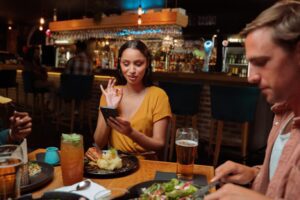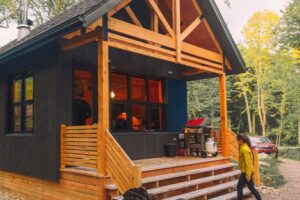As more and more travelers jet to online resources for their trip planning, expectations for silky-smooth, Amazon-like user experiences tag along with them.
For tourism marketers, this challenge also presents an opportunity. Borrow from the attributes that make e-commerce shopping so personalized, intuitive and sticky, and you’ll turn those casual clickers into committed bag packers.
Travelers’ Expectations: What You Need to Know
One quick look at these stats from McKinsey, and it’s clear that users measure all website experiences against lofty UX standards set by leading e-commerce and tech brands.
- 71% of consumers expect personalized interactions
- 76% feel frustrated when personalization is lacking
- 76% say personalized communication prompts them to consider a brand
- 78% say personalization makes them more likely to repurchase

While 85% of the businesses studied by Twilio Segment believe they are offering personalized experiences, only 60% of consumers seem to think that’s the case.
How Travel Sites Can Deliver and Delight
Let’s break down three key optimizations to consider when aiming to keep travelers smiling, clicking and booking—all inspired by features that are fundamental to successful retail sites.
- Incorporate personalized touches: Tailor imagery, CTAs and messaging based on the user’s location and behavior. Plus, take advantage of valuable data like preferences and past visits so you can serve content specific to each user’s profile.
- Empower visitors to build their trip: Take a cue from Discover Puerto Rico and provide a user-friendly mechanism for adding activities, restaurants and live events to a custom trip plan. Or take it a step further, like Visit California, and offer curated trip ideas based on preferences and information inputted by users. Lastly, be inspired by Washington DC’s site and ensure that visitors can complete their trip planning with you rather than getting bounced to a third-party destination to finalize booking.
- Validate and motivate with dynamic content: Just as ratings and reviews drive e-commerce purchasing, travel sites can inspire bookings by showing off user-generated photos and testimonials. If this content updates seasonally and showcases trending experiences, even better. See how Visit Florida works crowd-sourced Instagram posts right into their homepage.

Did you know?
Airbnb utilizes visitor location to serve up geo-targeted homepage promos.
Travel and Tourism UX Best Practices
While helpful tools and inspiring content undoubtedly elevate trip planning efforts, certain finishing touches are just as vital for providing a seamless and rewarding user experience.
- Prioritize mobile-first design and accessibility: With more than 70% of U.S. consumers using mobile devices for booking local travel, mobile-first design is a must-have. Maximizing accessibility is also pivotal for inclusion, compliance and SEO. Achieve this by including alt text, screen-reader compatibility and sufficient color contrast.
- Design with intention: Lean on emotional UX to connect with travelers. This can include anything to make your site’s pages feel less transactional and more experiential. Think immersive storytelling, ambient video loops and sensory audio cues.
- Embrace AI: AI-powered chatbots (like this one from Visit Colorado), intelligent itinerary builders and integrated booking experiences can all help to eliminate layers between consideration and conversion.
- Measure, optimize, repeat: Borrow performance tracking tactics from retail sites by monitoring items like bounce rate, time onsite and booking rate. Gauge emotional satisfaction and measure site usability with surveys. You can also consistently improve efficiency by A/B testing content placement, personalization variants, CTA messages and more.
When Site Optimization Doubles as Effective Marketing
Depending on how your travel site is currently set up, improving it to reflect the UX capabilities of an e-commerce giant may seem like a big lift. But remember, you can start small and address various needs at a pace that feels right for you.
And if you’re looking for reassurance that there’s true value in making these updates, look no further than this California Carneros Resort and Spa case study. By implementing a personalization strategy and brand experience solution from Screen Pilot, the resort has enjoyed incredibly compelling results:
- Booking conversion rates increased by 300% for families and 400% for couples
- Overall organic revenue increased by 10%
- Average stay value for families increased by 36%
Where to Now: How to Move Forward with Your Site’s New Strategy
Lucky for the tourism industry, e-commerce innovation provides an ideal model for updating and modernizing travel websites. By moving away from a digital brochure mentality and heading toward a personalized, intuitive and emotional experience, we can all go to amazing places.
Marriner Marketing can lead the way as you consider your path forward. We’re ready to help with UX audits, e-commerce-inspired prototypes and mobile-first site redesigns—all rooted in travel behavior.
When you’re ready to reimagine your destination’s online experience, let’s talk. Together, we can build a conversion-driven, brand-first platform that feels just as user-friendly and engaging as your customers’ favorite shopping sites.
Sources:
“The value of getting personalization right—or wrong—is multiplying,” McKinsey & Company, November 2021.
“The State of Personalization 2021,” Twilio Segment, 2021.
“Mobile Phones Overtake Desktops as Consumers’ Preferred Travel Booking Tool,” PYMTNS, April 2025.
